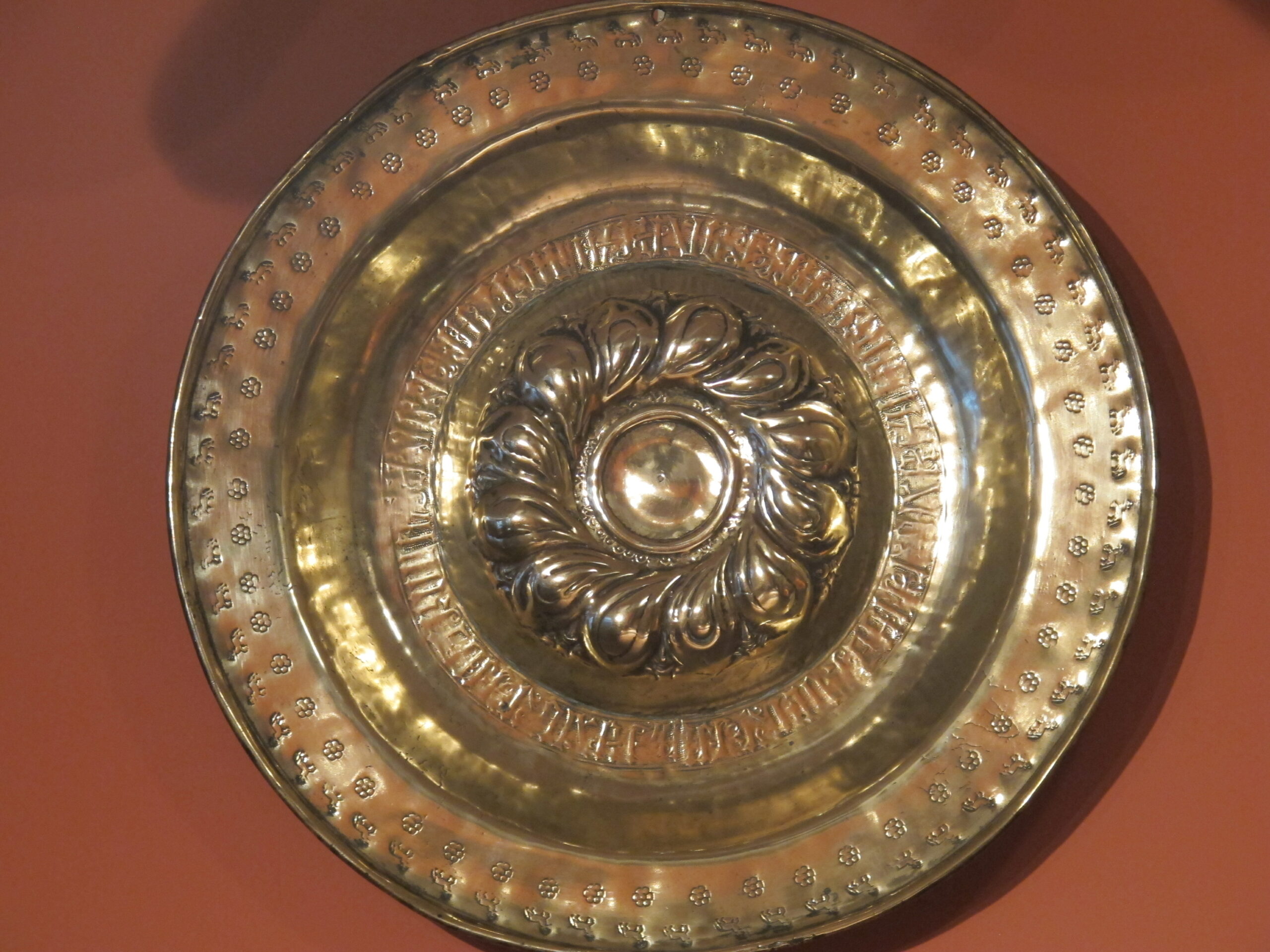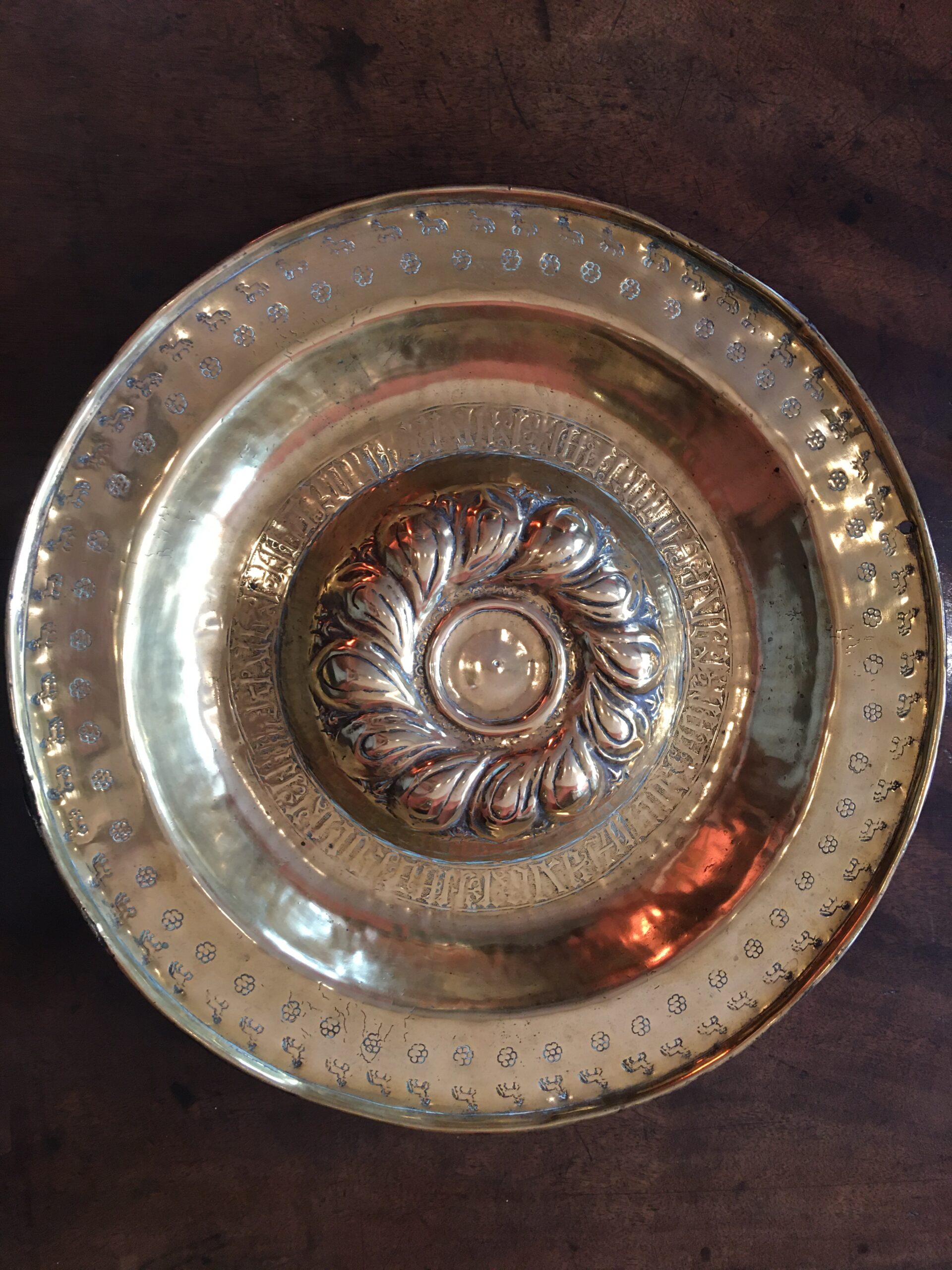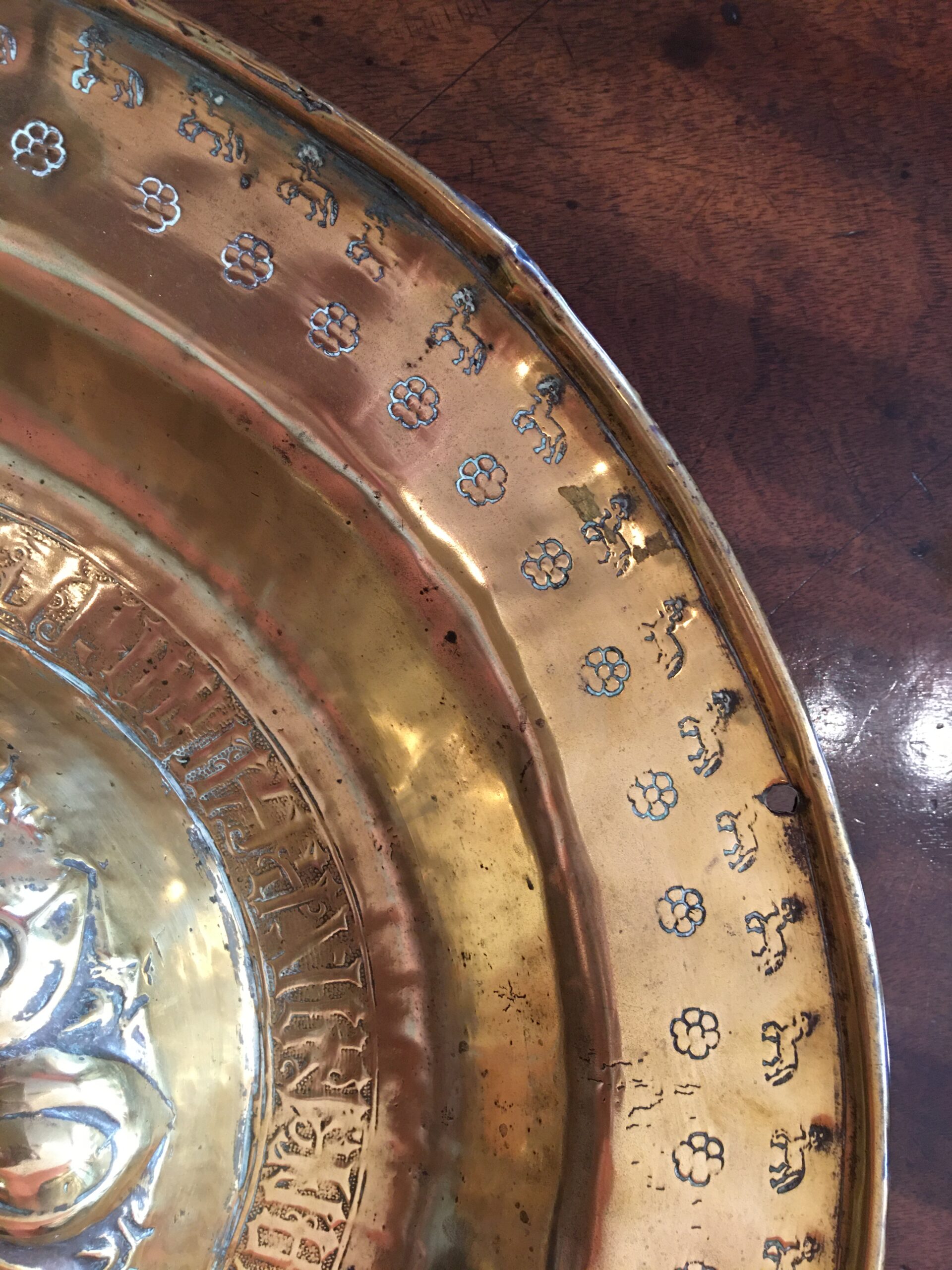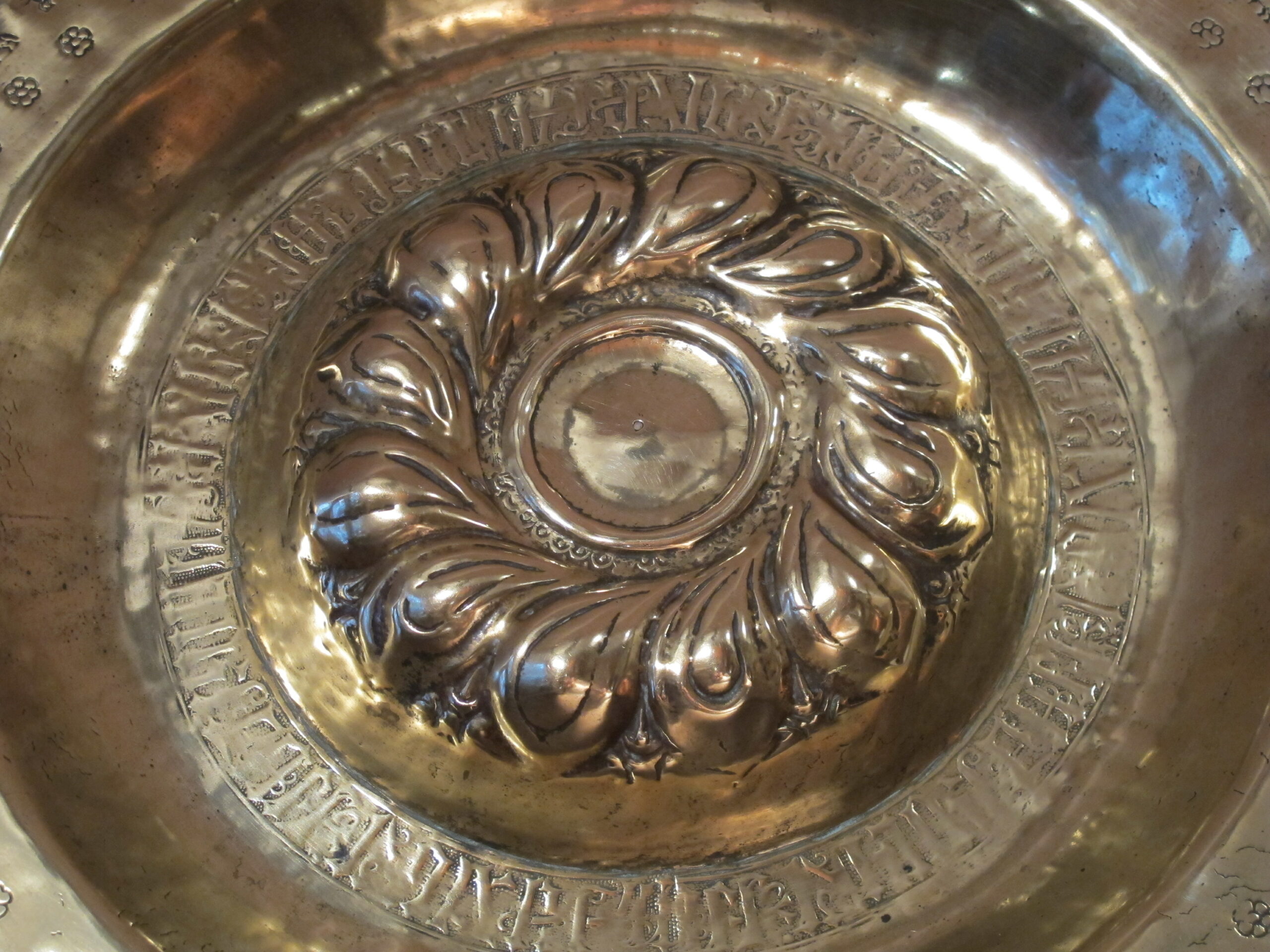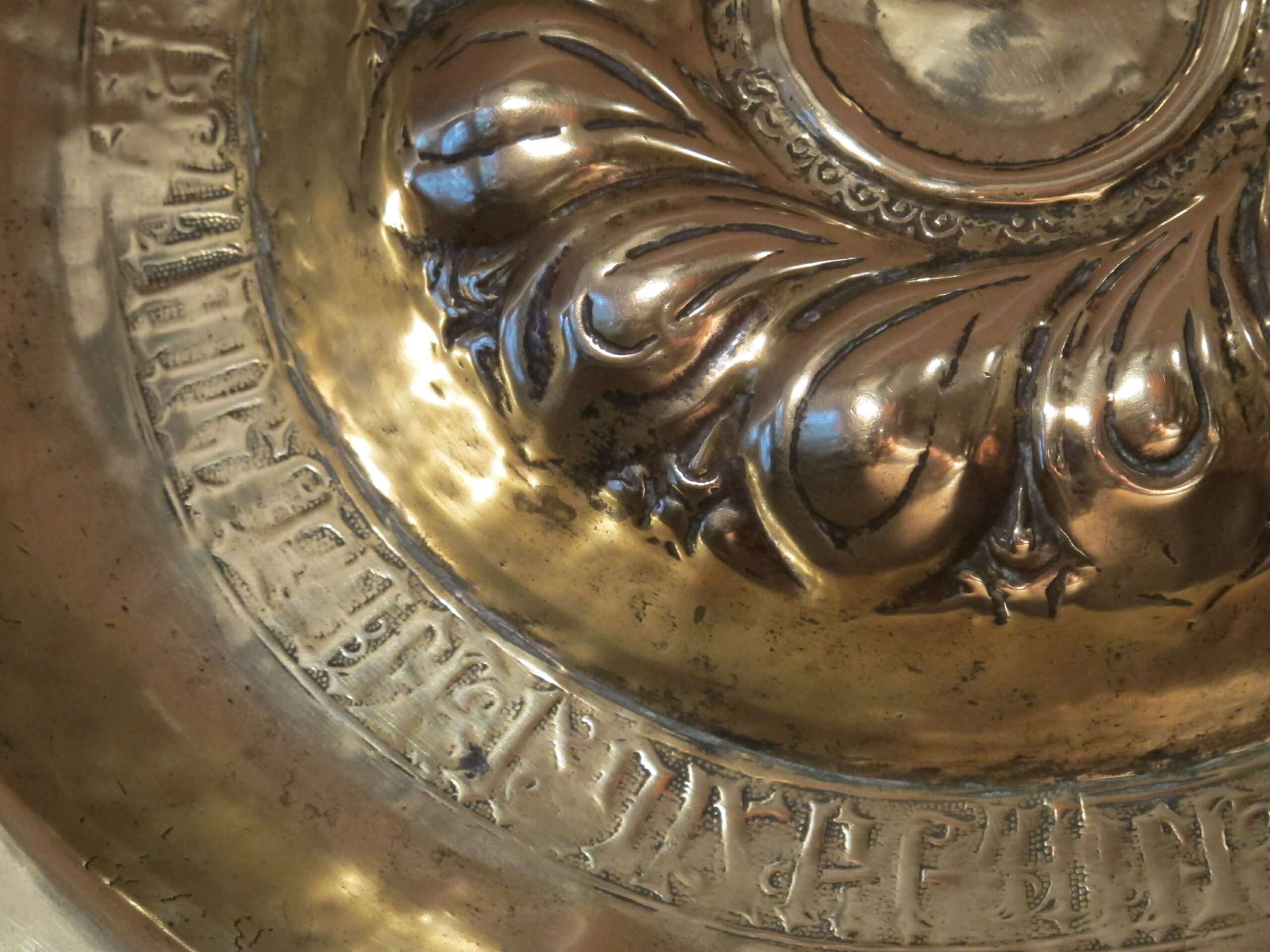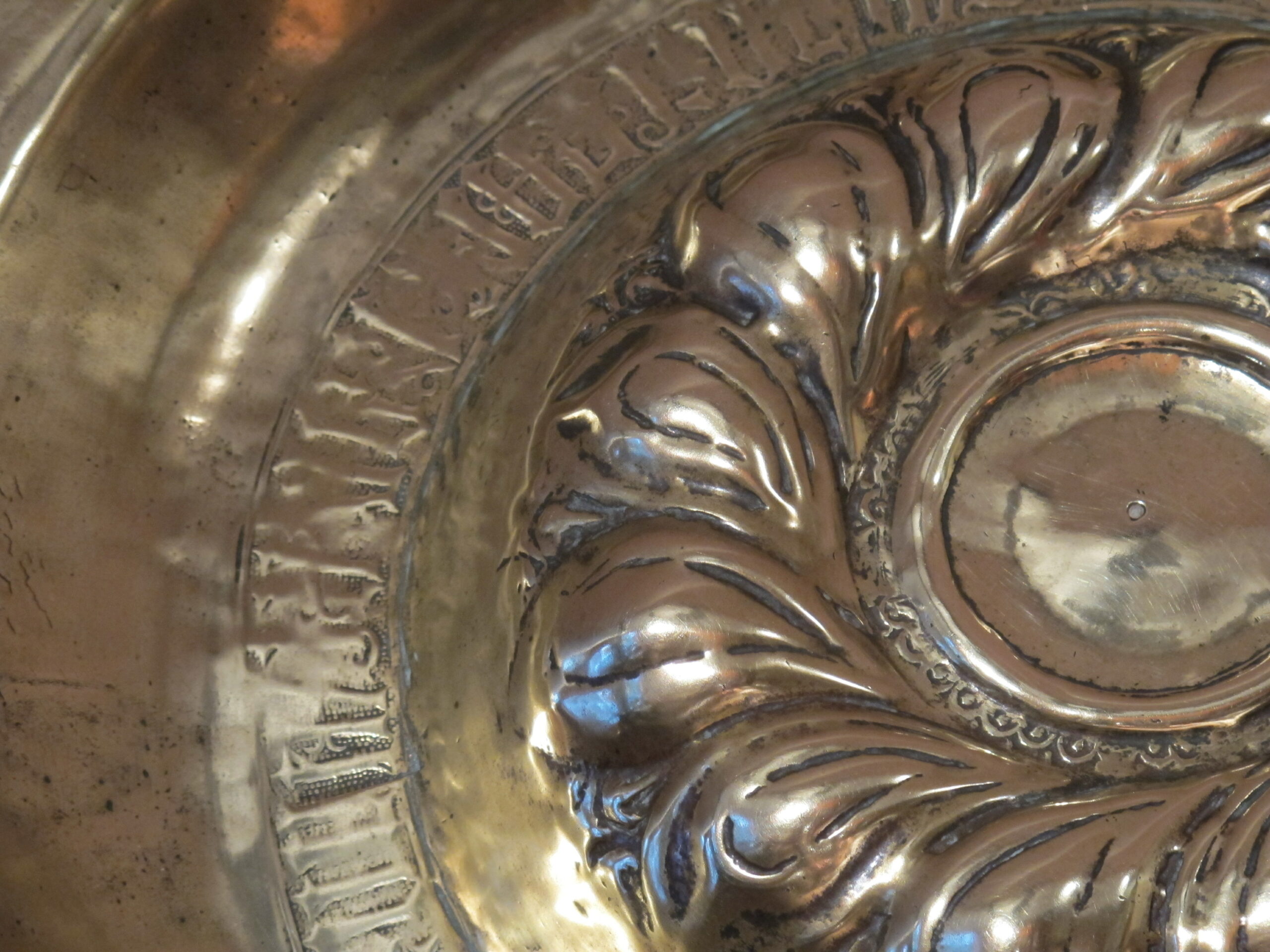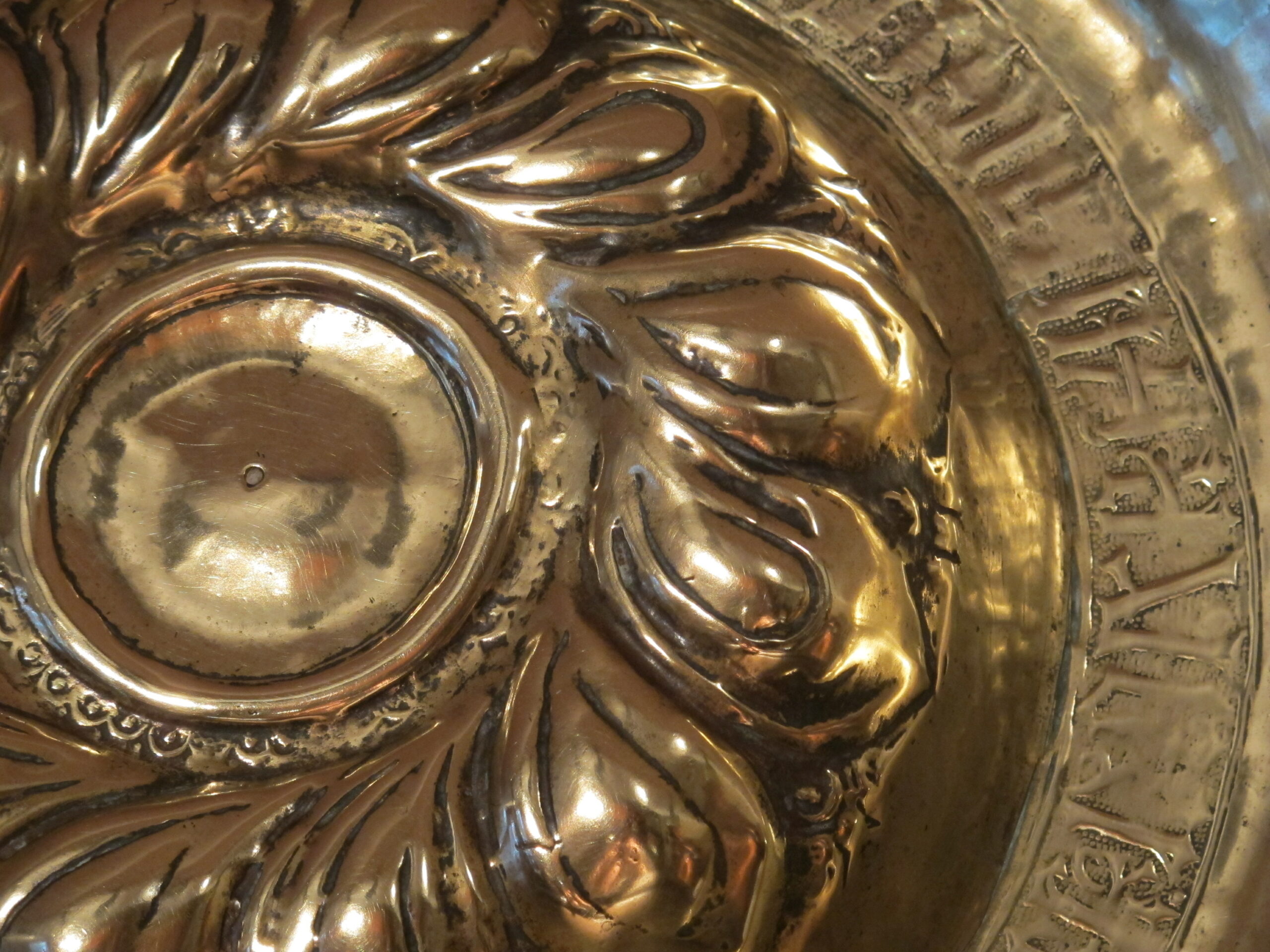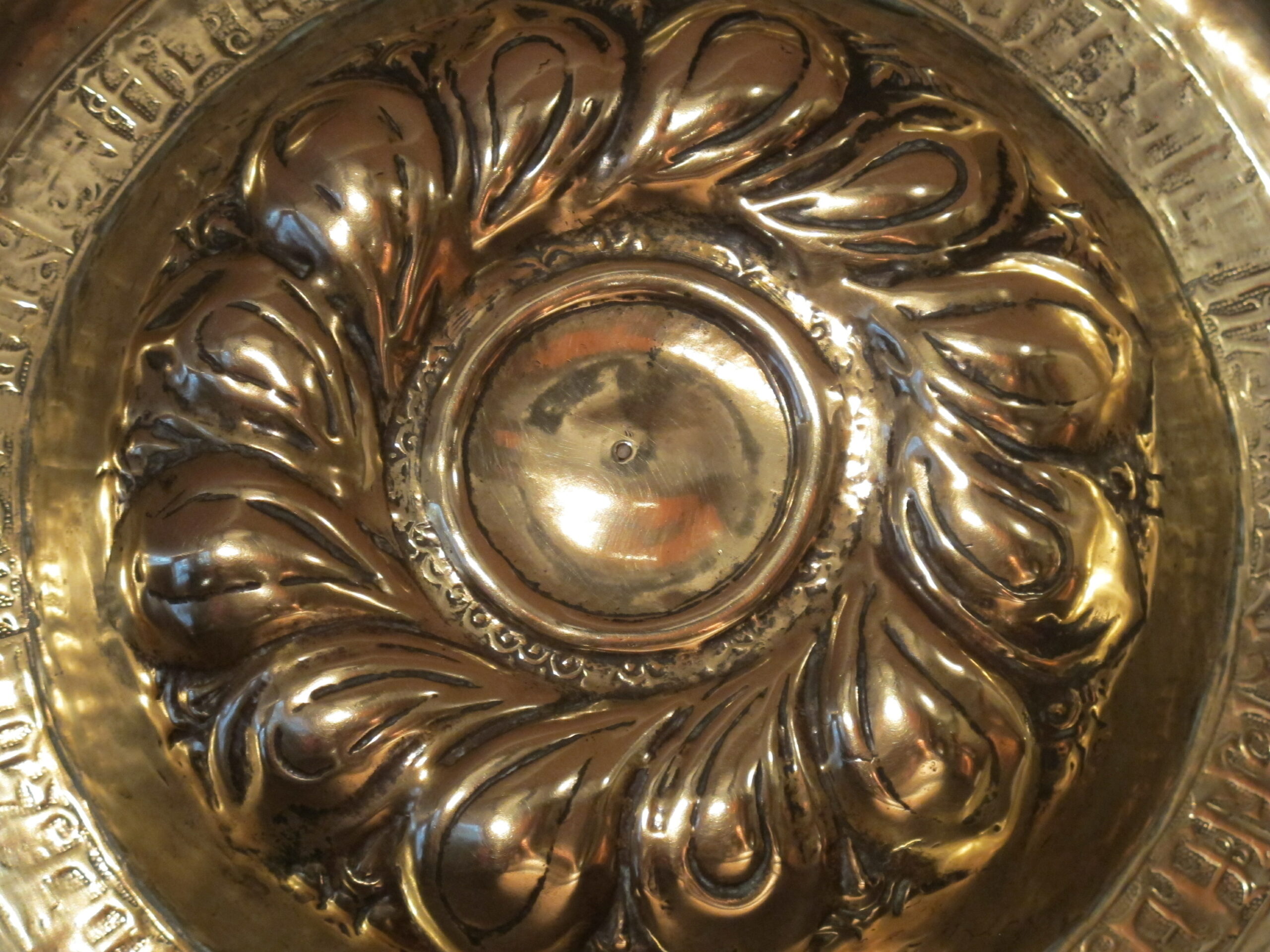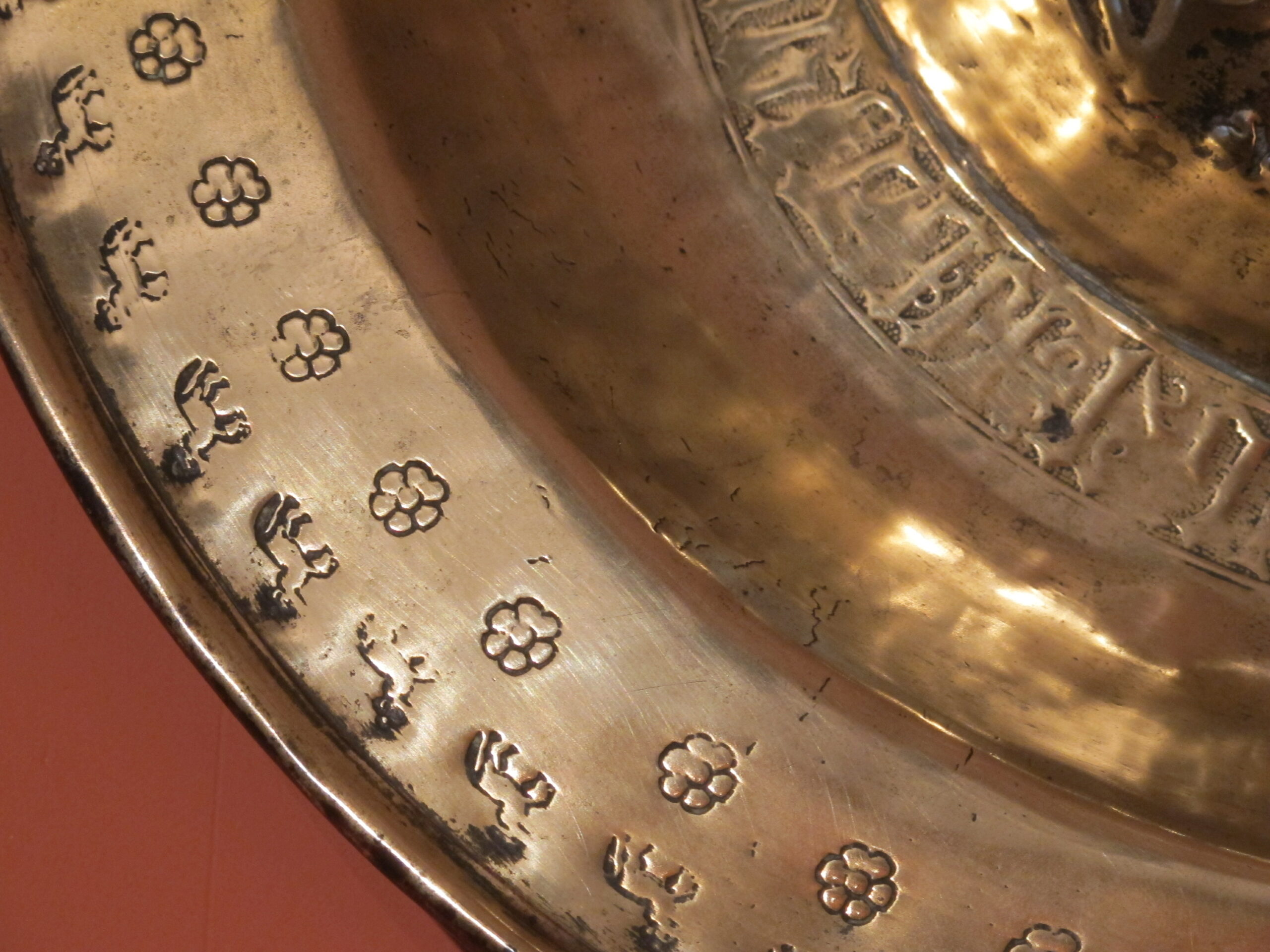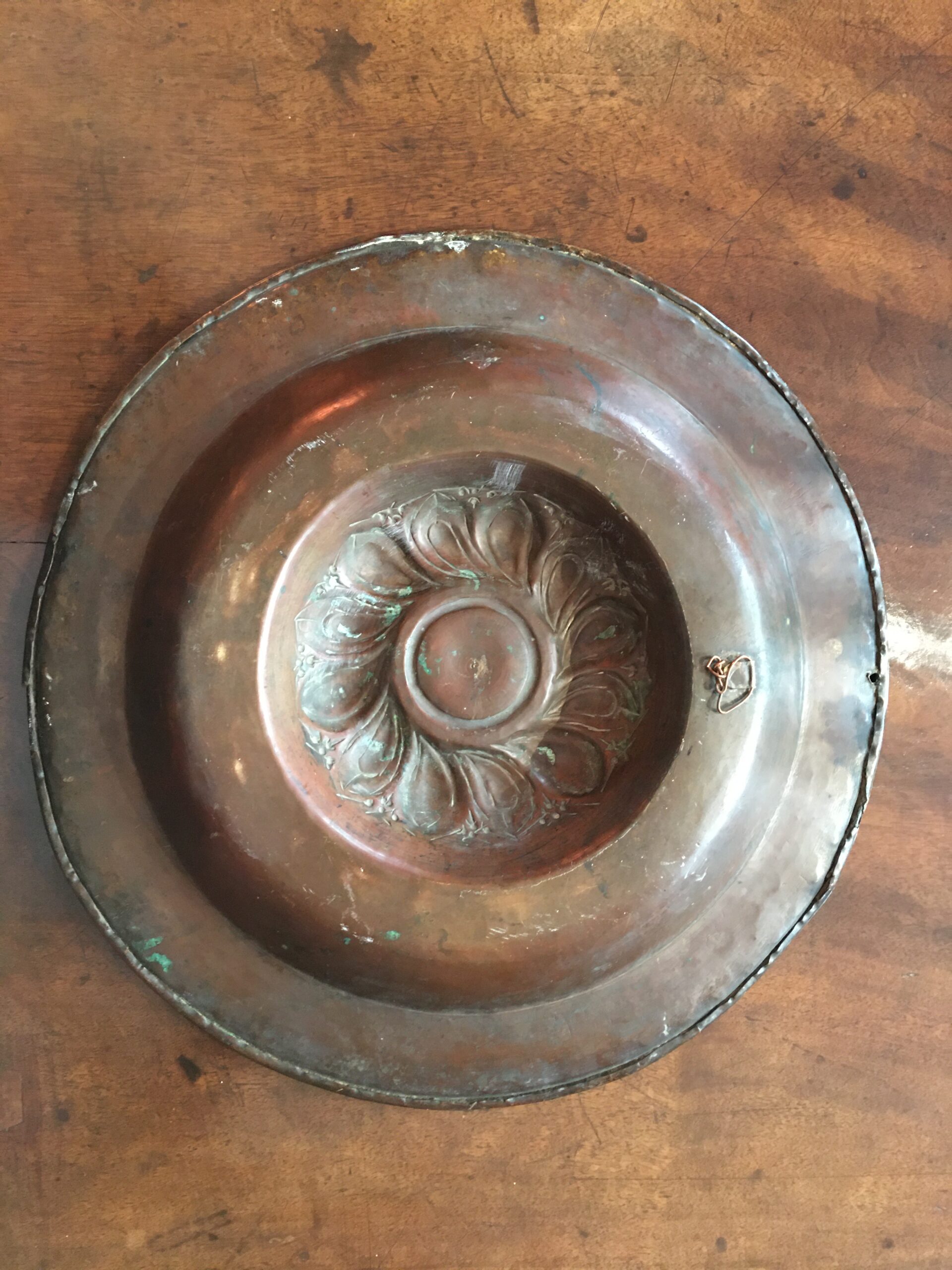Description
This is in Belgium, in the city of Dinant during the 12th and 13th centuries, that the ‘copper beaters’ corporation transfers the name of the city to the brass-ware activity, « dinanderie ».
The word ‘dinanderie’ refers to works made of beaten metal (copper and brass), but can also be applied by extension to works made of cast metal (bronze and brass) produced by the same craftsmen.
From the beginning of the Middle Ages, the ‘dinandiers’ made religious objects like censers and aquamaniles, but it was especially from the fifteenth century onwards with the manufacturing of hammered brass dishes that this corporation gained considerable takeoff. The spreading of these dishes or basins henceforth called ‘alm dish’ then reached all of Christian Europe.
Throughout the fifteenth century and the sixteenth century, the trend for these ‘alm dishes’ with embossed decor will be spread all over Europe. They were produced in Germany, in Nuremberg especially for the most beautiful ones, in Central Europe and also in Northern Italy .
These dishes were not exclusively restricted to the service of worship, they could also be used as a reflector of light, or as a decorative element in private houses.
This beautiful alm dish matches perfectly the productions of the Nuremberg’s workshops.
It presents a central dome, called ‘umbilic’ and offers a embossed decor, typical of these workshops. Elaborated according to a traditional pattern, its umbilicus is enriched with gadroons, its basin adorned by beautiful German Gothic letters and its wings bear an engraved decoration. Finally, for solidity reasons, the dish’s rim is folded over a iron wire, as it was customary to manufacture them this way in Germany.

